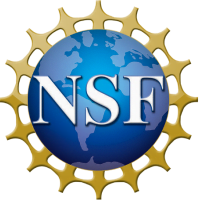RSS feed source: National Science Foundation
Due by 5pm submitting organization’s local time
Please Note: Individuals considering submitting a conference proposal are strongly encouraged to contact the PAC program officers prior to submitting a full proposal by emailing a one-page summary of the topic and scope of the conference, a list of the anticipated speakers and the anticipated budget request.
Award information
Anticipated Funding Amount is approximately $5,000,000 – $7,300,000, for all new and continuing awards combined, pending availability of funds. Most research awards supported by PAC range between $350,000 and $600,000; CAREER awards between $500,000 and $715,000; conferences, group travel or other community-development/community-building activities awards between $20,000 and $50,000. All figures in the preceding sentences are totals that include both direct and indirect costs for the entire duration of the award. Somewhat larger funding amounts may be possible under limited circumstances, such as co-funding from other NSF programs or EPSCoR support
Click this link to continue reading the article on the source website.
